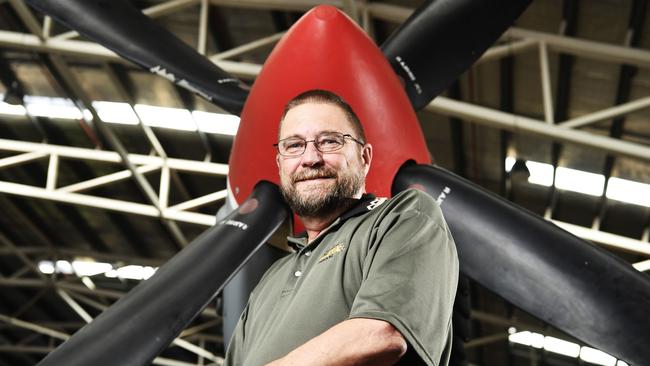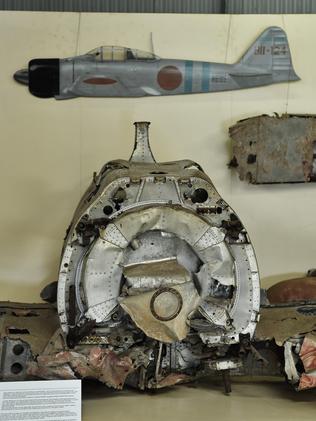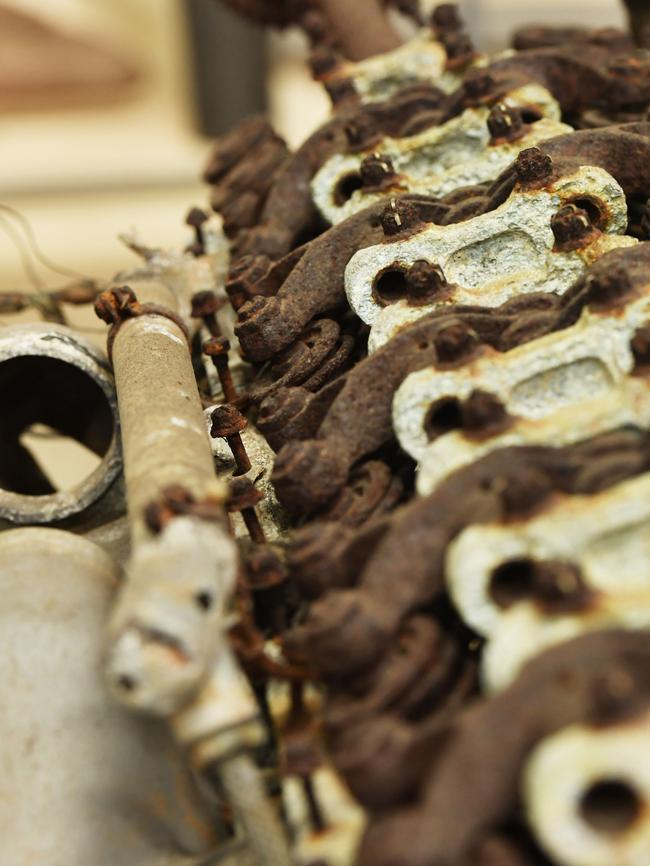ON February 19, 1942, and the first bombs were dropped on Australian soil. It wasn’t even 10 in the morning
The Japanese forces crossed the coast near Koolpinyah, east of Darwin, at 9.45am before turning to the northwest over Noonamah, heading right for the Top End capital.
At 9.55am, the planes approached from the southeast yet there was no alarm. Three minutes later, the first bomb was dropped. The first raid on Darwin’s soil was devastating — of the 47 ships in the harbour, 21 were suck by the time the morning was over and the lives of 92 seamen were lost.
Darwin itself was badly hit and the loss of life was severe. A Japanese pilot recalls being intent on his mission to eliminate Darwin, its port and allied bases.
Lieutenant Takayoshi Morinaga, a veteran pilot and experienced bomber, recalls carrying an 800kg bomb; one he was told to drop on military headquarters and government buildings. Another pilot, Tekeshi Maeda, said; “I’m sorry to say that I had to attack Darwin. It was a simple mission. I dropped bombs and then I went home”.
The planes that flew in the airspace above the Territory were sophisticated. New technology made them faster, stealthier and more deadly than anything seen before. But perhaps one of the most famous planes — a Spitfire — lay untouched for decades in the wilderness of Litchfield National Park.
Far from any paths or roads and well off the beaten track, the plane lies in pieces and, importantly, in the middle of a battle between who actually owns it and what’s to happen to this significant piece of history.

Spitfires were fighter aircraft that defended Australia when the bombing first started. — Tony Simons
THE Spitfire was shot down during a raid on Darwin and was recovered from the Finnis River area.
The notorious type of aircraft is remembered in Australia’s military history for it’s body adorned with paint like a shark’s face and stealth through the air.
Strolling through the Darwin Aviation Museum in Berrimah, one can see remnants and replicas of other planes used by Allied and enemy forces during the bombing.
Bits and pieces of a Japanese Mitsubishi Zero and similar aircraft splay dormant on the ground as shadows of their former lives as pieces of machinery used to destroy Darwin.
Aviation Historical Society of the NT president Tony Simons speaks about the Spitfire proudly, describing how it compared to the American and Japanese planes.
“Spitfires were fighter aircraft that defended Australia when the bombing first started,“ he said.
“At first, there was only the American 33rd pursuit squadron based in Darwin and they were on the way to Java when the Japs turned up. They all got shot down with the exception of one or two so spitfires then came back as additional defence. Once Australia had been bombed, the Prime Minister at the time, John Curtin, was lobbying the British to get Australian forces who were serving overseas to come back and defend Australia.
“They relocated the spitfires, some of which were flying in North Africa, back to Australia with Australian pilots and were reinforced with additional aircraft and eventually were upgraded to a Spitfire MK VIII — a better engine, better climb and better turn so they were generally better aircraft which were bought back to defend as the raids went on for some time.”
“It wasn’t until the MK VIII planes arrived that we got on top of the Japs. The American’s kitty hawk was generally outclassed. The Gap’s Mitsubishi Zero was quicker though the Americans found they could out run them in a dive and went above them to take a running dive to shoot them down but once they got past them, they had to keep going. While they were slower than the zeros, they could cop a lot more.”


The spitfire that sits untouched in the wilderness of Litchfield National Park belonged to Sergeant Colin Duncan who fought his way from the burning cockpit of the plane, whose twisted wreckage now lays open to the elements. Over seven decades of wet and dry seasons, fires and floods, the plane is now in the middle of a dispute between several organisations who believe they have ownership of the wreckage.
Mr Simons said considering the major players around the table, it would be many years before the plane would find a home or a more permanent solution.
“I would say it’s almost impossible to move,” he said.
“It’s spread over a reasonable area so it would be a pretty difficult undertaking to recover everything. Plus you've got the complications with the area now overgrown so finding stuff is difficult though there’s some substantial pieces still there. An engine block is there and that’s a substantial piece of metal and the aircraft is made from aluminium which decays but it doesn't rust. It’ll decay over time into power but my understanding from heritage is that there’s substantial pieces out there (as well as) bits and pieces and nuts and bolts lying on the ground.”
Access to the wreckage is by helicopter only but Mr Simons said pilfering of its parts would be difficult. It’s far from established tracks and was described in military records as “rough country” and is likely why it’s remained undiscovered and largely untouched.
The remoteness of the crash site is likely also why rescue crews took five days to reach Duncan after he crashed on June 30, 1943. In following days, his mates dropped him food and cigarettes along with a note saying: “You owe me a beer for all this.”
In an in interview before his death with fellow pilot and historian Jim Grant, Duncan told how he forced the canopy of his plane open, while his legs were on fire, when the rip cord came off in his hands.
“I realised then I had a battle on my hands — a red hot engine, a stuck canopy and the possibility of one or more Zeros following me,” Duncan said.
Mr Simons said the battle is now between heritage and the RAAF. “The wreck’s been known and documented,” he said.
“Our people have known about it for decades but I don’t think anyone’s been out to it since a helicopter pilot went saw some bits of metal on the ground. (His visibility) was helped by the fact that we’ve had three dreadful wet seasons so there hasn't been much growth plus bushfires burn and expose it directly. (The pilot) found it and contacted heritage but then the RAAF found out about it and they said it was their property and they would recover it.”
“To display it is impractical because of the size of the area that it’s covering. You’d have to do it as a crash site display and that’d need a 30m by 30m area. It’s also sitting by an escarpment and we understand some parts have been washed own the side. Whether they're recoverable or not, I don’t know.”
“The NT heritage branch are in change of what happens going forward. It’s impractical to think what could be done at the moment. It’s it's a crash site. We need to have a round table discussion and make a sensible decision about the best outcome as to whether it stays there or parts are recovered.”
“We’re just going to play an interested spectator role and take instructions from heritage but with the level of players involved, it won’t be a quick decision.”


‘Astounding’ WWII site loses heritage listing amid Top End housing push
Just 24 hours after laying a wreath for Anzac Day commemorations, the NT Planning Minister publicly announced he would remove protections from historic WWII wreckage in an area slated for a 4000-home development.
‘Lest we forget’: Bombing of Darwin war hero dies aged 104
World War II veteran and Bombing of Darwin survivor Brian Winspear AM has died peacefully aged 104.